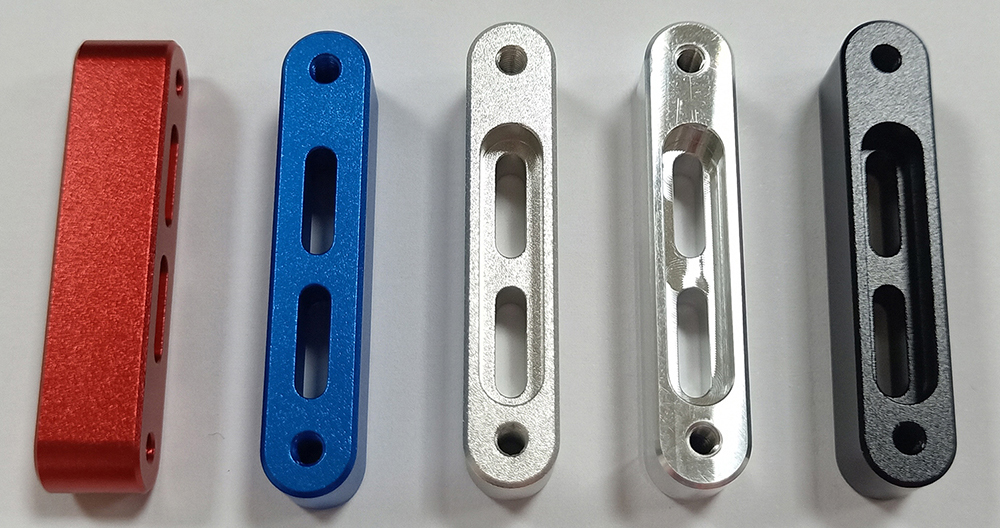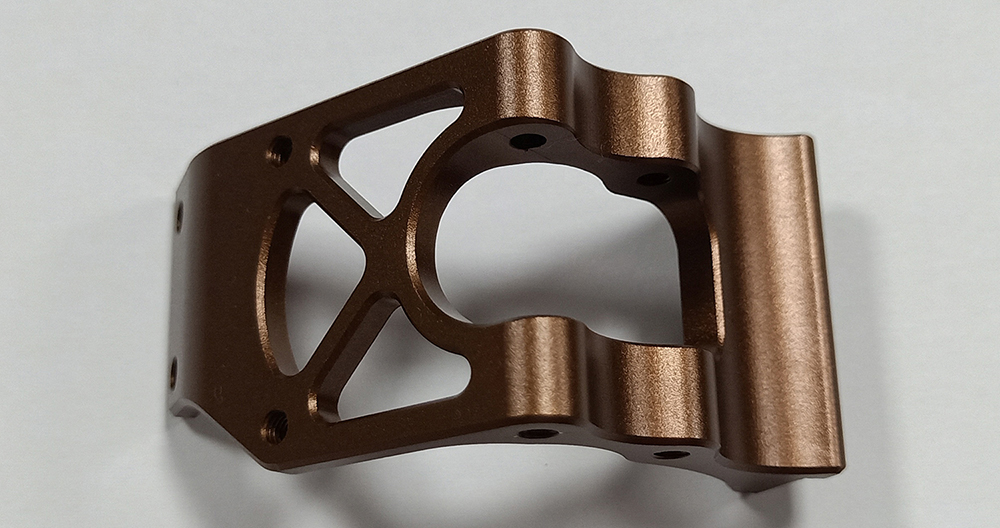
In CNC Aluminum Machining Service, Anodizing Is Increasingly Used In Many Machined Aluminum Parts. Here Are The Analysis and Solution of Main Defects of Aluminium Profile Anodizing and Coloring Products
1. Turn yellow
1). Definition: Some impurities are mixed into the oxide film, causing the film to become yellowish.
2). Phenomenon: When this film is used for electrolytic coloring, the color tone will change.
3). Causes: A. Iron and silicon in the electrolyte or alloy materials are mixed into the film, causing the film to become yellow. B. The anodizing process conditions are inappropriate. That is, low oxidation and high current density oxidation produce a strange thick film.
4). Solutions: A. Reduce the concentration of iron and silicon in alloy and electrolyte. B. Optimize the anodizing process conditions.
2. Overlap
1). Definition: The material overlaps during oxidation, and the film is abnormally formed due to abnormal proximity.
2). Phenomenon: The imprints of the laminated profile can be seen from the part where the film does not occur and the part where the end is thinned, and sometimes part of the rainbow (interference color) can be seen.
3). Causes: In the electrolysis, the arrangement of aluminum materials is too dense, and abnormal contact may occur.
4). Solutions: A. Keep proper spacing between binding materials. B. Clamp the fixture. C. Remove the deformed fixture. D. Do not install deformed and bent profiles. E. Reduce the amount of mixing and circulation.
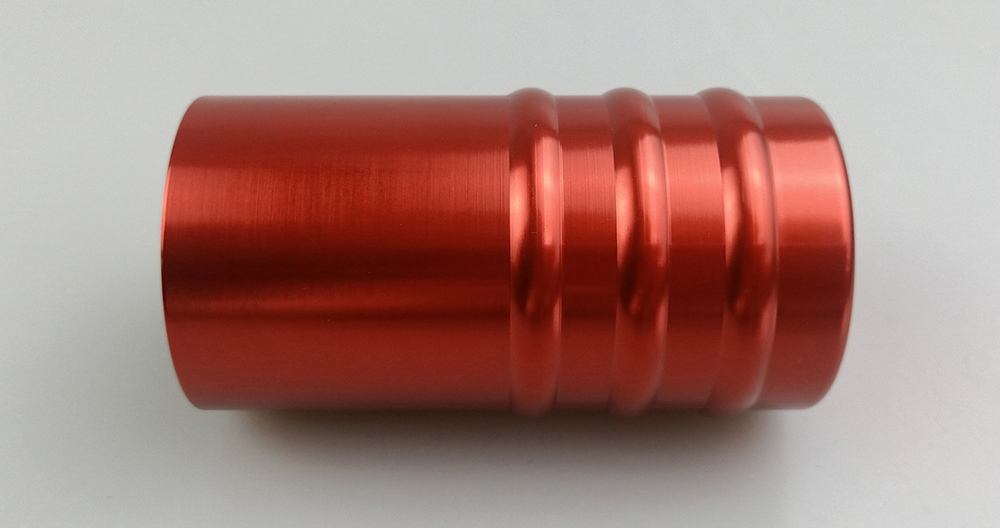
3. Gathering gas (air bag)
1). Definition: The gas generated during electrolysis or the air used for stirring stays in the gap or corner of the material. Therefore, no oxide film can be formed, and usually no coloration.
2). Phenomenon: The gaps or corners of the material, and the film is partially thin or absent. When electrolytic coloring is performed, a uniform color cannot be obtained.
3). Causes: The angle of hoisting is improper or is affected by the shape of the material. In the gap or corner of the material, the reacting gas and the air for stirring stay in the gap or corner of the material, which hinders the formation and coloring of the film.
4). Solution: adopt the hoisting angle and loading method that allows gas to be easily discharged.
4. Black spot
1). Definition: Black or white spots appear after anodizing due to local precipitation of β’ intermediate phase.
2). Phenomenon: Black, white or gray spots with approximately equal spacing along the extrusion direction may be seen. These spots are mostly Mg2si precipitates with low hardness.
3). Causes: The intermediate phase (Mg2si) precipitates on the part of the umbilical press material that is in contact with the cold bed, which is subjected to the process of rapid cooling and reheating. The aluminum surface where the intermediate phase is precipitated is coarsened in the decontamination process, and a messy skin structure is formed by anodic oxidation.
4). Solutions: A. Suppress back heating by cooling fan, etc. B. Reduce the thermal conductivity of the material in contact with the extruded material.
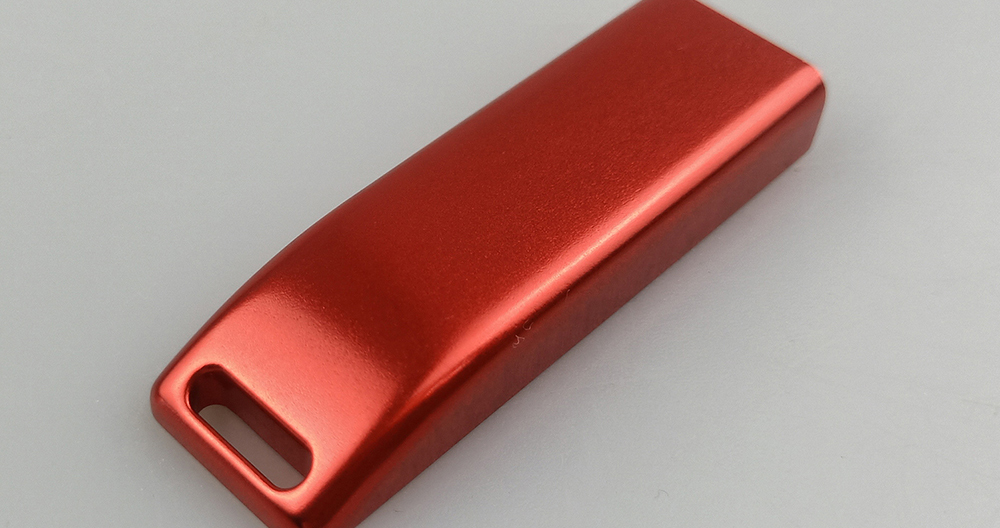
5. Powdering (powder film)
1). Definition: White powder formed on the surface of the film after anodic oxidation.
2). Phenomenon: After anodizing, the film is white powdery and opaque. It is easy to wipe off the powder by hand rubbing.
3). Causes: Long-term electrolysis in high-temperature, high-concentration electrolyte, or long-term immersion after electrolysis, chemically dissolves the film and powders.
4). Solutions: A. Lower the electrolyte concentration and temperature. B. Lower the amount of aluminum ion. C. Shorten the soaking time.
6. Short circuit (electric corrosion, film melting, sparking)
1). Definition: During electrification, the material is in contact with each other and part of the material is dissolved.
2). Phenomenon: In the electrification process, the material and the opposite electrode are short-circuited, and part of the material is dissolved due to excessive current.
3). Causes: The material is in contact with the poles, or short-circuited by the dropped profile.
4). Solutions: A. Improve the arrangement. B. Prevent the material from swinging. C. Remove the dropped material. D. Adjust the distance between poles.
7. Poor electrolysis (poor power supply)
1). Definition: In anodizing, the conductive contact is poor. Unlike the set current value, the specified current is not flowing, and the film can hardly be formed.
2). Phenomenon: Rainbow phenomenon (interference color) can sometimes be seen on both sides, and electrolytic coloring cannot be performed normally.
3). Causes: A. The electrolysis is interrupted due to power failure or power failure. B. The clamps are deteriorated and contaminated and cannot be tightened. C. The fixture contact area is insufficient. D. The set current value is wrong.
4). Solutions: A. Strengthen the management of fixture nodes. B. Increase the contact area. C. Confirm the set current value.
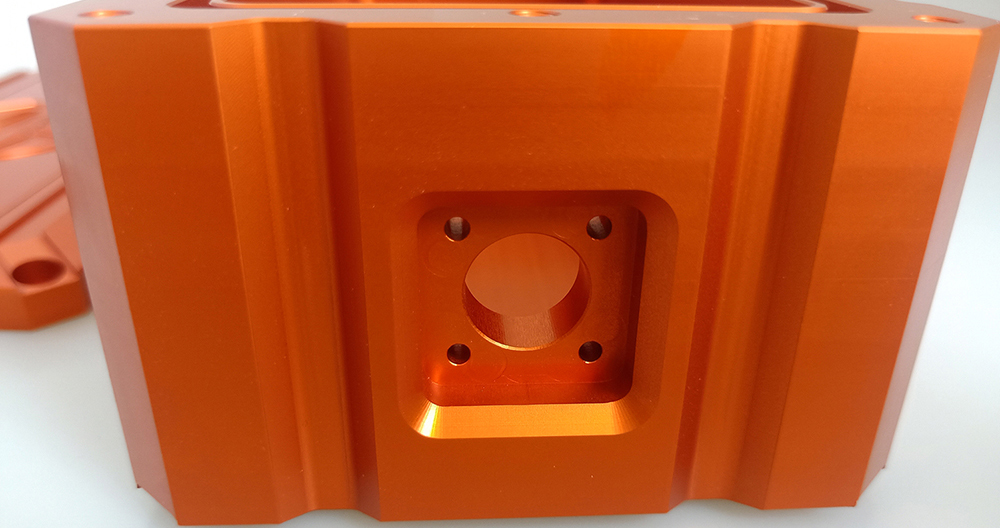
8. Milky white
1). Definition: Impurities are mixed into the anodic oxide film, and the structure of the film is different to produce milky white.
2). Phenomenon: The film lacks transparency and becomes whitish.
3). Causes: A. Electrolysis treatment at high temperature. B. The hot water washing time is short. C. Extrusion conditions (such as low extrusion temperature, etc.) are poor. D. Fluctuations in the content of silicon, iron, manganese, etc.
4). Solutions: A. Normalization of anodizing treatment conditions. B. Normalization of washing conditions. C. Confirm the set current value. D. Adjust the alloy composition.
9. Skin burns (burns)
1). Definition: During anodizing, the current density is locally too large, resulting in the appearance of burns.
2). Phenomenon: In the anodic oxidation treatment, where the current is locally concentrated, the temperature increases and the thickness of the film increases, which becomes a whitening and powdering state. The film will be thinner around the site where the film injury occurs.
3). Causes: A. Insufficient contact area, too close to the opposite electrode and the material, etc., resulting in excessive local current density. B. The stirring ability is insufficient and uneven, and the aluminum ion concentration has exceeded the upper limit.
4). Solutions: A. Ensure proper contact area. B. Improve the configuration of the opposite pole. C. Increase the circulation volume of the tank liquid and be even. D. Set the appropriate current density. E. Optimize the process conditions, especially to determine the aluminum ion content.

10. Poor corrosion resistance
1). Main cause: Sulfuric acid concentration is too high and aluminum ion content exceeds 20 g/L. 2.
2). Solution: Keep the sulfuric acid concentration at 150-200 g/L. If it is confirmed that the aluminum ion exceeds 20 g/L, consider replacing 1/2-3/4 of the tank solution.
11. The thin film in the hanging material leads to light coloration, or even can not be colored
1). Main cause: the material is not tied tightly or loosened after alkali corrosion, so that the material is in poor contact with the conductive rod.
2). Solution: After alkali etching, use pliers to further tighten the binding wire.
12. Partial burns of the oxide film become black
1). Main cause: poor contact between the aluminum and the conductive rod or insufficient contact area, the film on the conductive rod is not clean, or the cathode and anode contacts are short-circuited.
2). Solution: Improve the contact and eliminate the contact between the anode and the cathode.
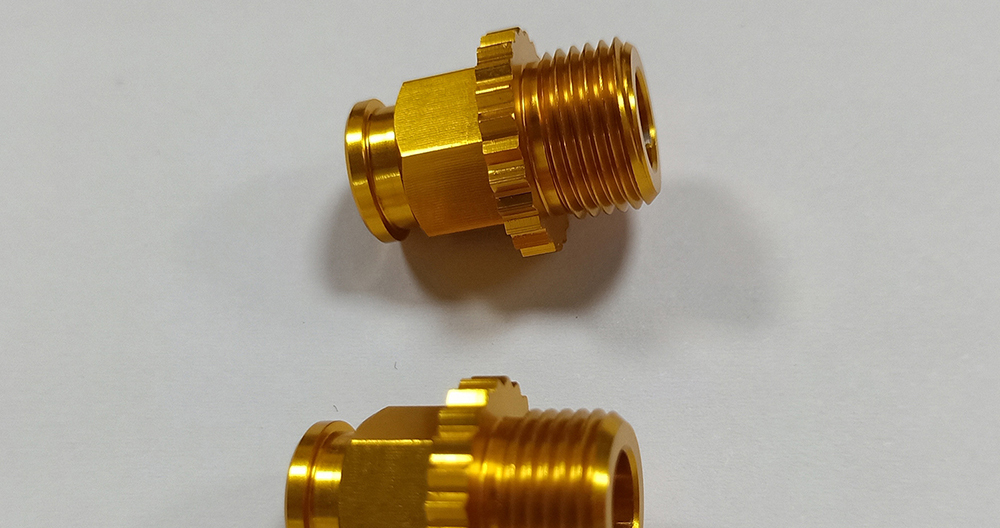
13. The film layer is dark
1). Main causes: Alloy composition problem, interruption of current and power supply during oxidation, low concentration of electrolyte, high oxidation voltage, poor pretreatment.
2). Solution: If there is a material problem, improve the quality of the ingot. If it is a bad treatment, we should strengthen the pretreatment. Adjust the electrolyte content, adjust the concentration of sulfuric acid, and reduce the voltage appropriately.
14. Fingerprints appear
1). Main cause: Finger touching the unsealed anodic oxide film during operation (this is a phenomenon that exists in many factories)
2). Solution: Wear clean gloves and try to avoid finger contact.
